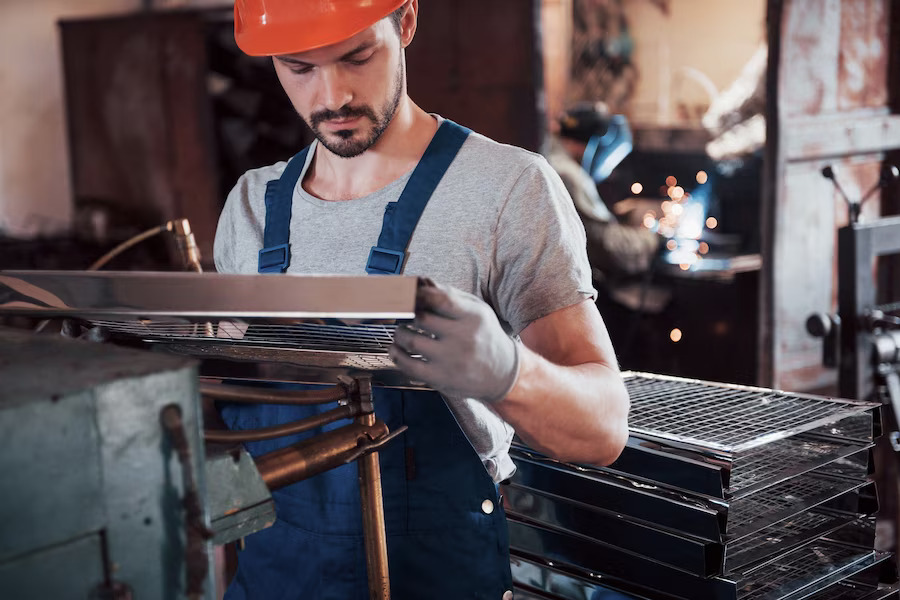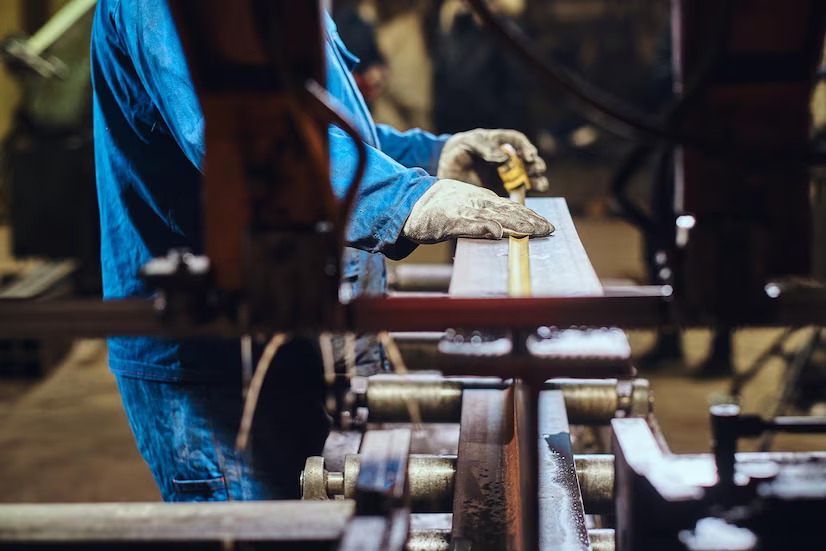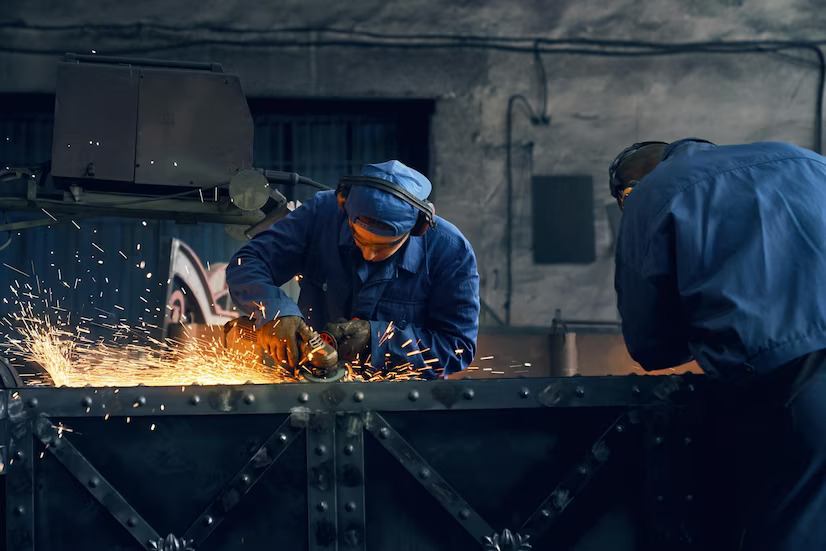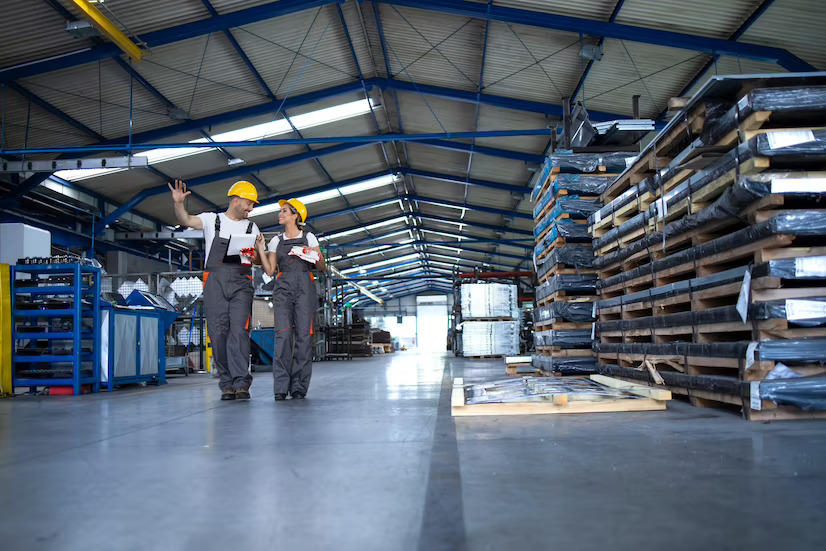Advancements in Sheet Metal Fabrication Techniques: Exploring the Latest Trends and Innovations
- 1 Overview of traditional sheet metal fabrication techniques
- 2 Limitations of traditional sheet metal fabrication techniques
- 2.1 Material limitations
- 2.2 Production time
- 2.3 Costs
- 2.4 Waste
- 3 Latest Trends and Innovations in Sheet Metal Fabrication
- 3.1 Automation
- 3.2 Additive Manufacturing
- 3.3 Digitalization
- 3.4 Hydroforming
- 3.5 Smart Manufacturing
- 4 Metal fabrication techniques Types
- 4.1 3D Printing
- 4.2 Laser Cutting
- 4.3 Waterjet cutting
- 4.4 CNC Machining
- 4.5 Robotic Welding
- 4.6 Press Brake Forming
- 4.7 Additive Manufacturing
Sheet metal fabrication is the process of molding and cutting thin sheets of metal into desired shapes and sizes. This technique is critical in a variety of industries, including automotive, aerospace, construction, and electronics. Sheet metal fabrication techniques have changed over the years to meet the ever-increasing demands of these industries, with the introduction of online sheet metal fabrication being a major changer in the field.
This piece delves into the most recent trends and advancements in sheet metal fabrication techniques, such as the rise of online sheet metal fabrication services.
Overview of traditional sheet metal fabrication techniques
Let first begin by looking at the traditional sheet metal fabrication techniques:
Cutting
This is the breaking sheet metal into smaller pieces using various tools such as shears, saws, and laser cutters. The fabricator can use this approach to cut the sheet to the desired size and form before moving on to the next phase.
Bending
This is the process of molding sheet metal into a specific shape or angle with the help of specialized instruments such as press brakes or rollers. This approach is utilized to construct the final product’s 3D shape.
Forming
The technique of manipulating sheet metal to obtain a specific shape or design is known as forming. This technique is widely used in different types of sheet metal to make curves or circular shapes. It is possible to accomplish so using press brakes, rollers, or stamping machines.
Welding
Welding is the joining of two or more pieces of metal using heat or pressure. It is often used in sheet metal production to connect various elements of a product. MIG welding, TIG welding, and spot welding are all welding processes.
Assembly
In this process, various components are linked together to form the final product. This can be accomplished with fasteners such as screws, rivets, or welding.
Limitations of traditional sheet metal fabrication techniques
Traditional Sheet Metal Fabrication Techniques have the following limitations:
Material limitations
The materials that can be used in traditional sheet metal fabricating procedures are limited. These techniques work well with ductile, malleable, and formable materials such as steel, aluminum, and copper. Other materials, such as high-strength alloys and composites, might be difficult to manufacture using standard methods, limiting their usage in some applications.
Production time
Traditional sheet metal fabrication procedures can be time-consuming, especially when working with complex pieces that have intricate shapes and features. Multiple procedures, including as cutting, bending, welding, and finishing, are frequently involved in the process, which can take a significant amount of time to complete. This can result in longer lead times and lower productivity, particularly in high-volume manufacturing situations.
Costs
Traditional sheet metal fabrication techniques can be expensive, especially for low-volume or custom parts, since the process frequently necessitates specialized equipment, tooling, and skilled labor, all of which can raise production costs. Furthermore, the cost of raw materials can be a significant factor, particularly for premium or difficult-to-work-with materials.
Waste
Traditional sheet metal production procedures can generate a lot of waste, including scrap and offcuts. This is especially problematic for expensive or difficult-to-source materials since it can result in higher material prices as well as environmental concerns about disposal. Furthermore, the manufacturing process might produce toxic emissions and waste materials, adding to environmental problems.
Latest Trends and Innovations in Sheet Metal Fabrication
Having looked at the traditional sheet metal fabrication techniques and their limitations, now let’s explore the latest trends and innovations starting with automation:
Automation
In recent years, automation has become a key trend in sheet metal manufacturing. Manufacturers can use modern robots and artificial intelligence to automate many of the repetitive and labor-intensive activities involved in sheet metal fabrication, such as cutting, bending, and welding. This results in shorter production times, higher quality, and lower prices.
Additive Manufacturing
Additive manufacturing, is a fast-developing trend in sheet metal fabrication. Manufacturers can use additive manufacturing to build complicated geometries and structures that would be difficult or impossible to achieve using standard fabrication techniques. Considering this technique is very flexible, it is perfect for low-volume manufacturing runs.
Digitalization
The application of digital technology to expedite and optimize the sheet metal production process is known as digitalization. This includes the use of modern CAD/CAM software, IoT sensors, and other digital technologies to improve accuracy, waste reduction, and efficiency.
Hydroforming
Hydraulic pressure is used to create pieces during the hydroforming process. This method is extremely accurate and efficient, making it excellent for generating complex forms and geometries. Furthermore, hydroforming can reduce material waste while improving product quality.
Smart Manufacturing
The integration of sophisticated technologies such as AI, IoT, and robotics into the sheet metal fabrication process is known as smart manufacturing. Manufacturers can use smart manufacturing to optimize production processes in real-time, cut costs, and enhance overall efficiency.
Sheet metal fabrication has advanced from traditional techniques over the years, and new trends and technologies are reshaping the sector, allowing manufacturers to build more complicated parts with greater precision and efficiency than ever before.
Metal fabrication techniques Types
3D Printing
Sheet metal part manufacturing has been transformed by 3D printing. 3D printing technology enables the manufacture of elaborate and complicated geometries that were previously difficult to produce with standard sheet metal manufacturing techniques. A 3D printer is used in the process, depositing layer upon layer of material until the required shape is created. 3D printing is both cost-effective and time-efficient, making it an excellent choice for small-scale manufacturing runs.
Laser Cutting
Laser cutting is a sheet metal fabrication technology that includes cutting through several types of sheet metal with a high-powered laser. Computer-aided design (CAD) software guides the laser beam, ensuring precise cuts and reducing material waste. Laser cutting is quick, efficient, and precise, making it an excellent choice for high-volume production runs. Laser cutting is particularly versatile, as it can be used to cut a variety of materials, including steel, aluminum, and copper.
Waterjet cutting
This is a sheet metal fabrication technology that includes cutting metal sheets with a high-pressure water jet. CAD software guides the waterjet, ensuring precise cuts and reducing material waste. Waterjet cutting is suitable for cutting dense materials like steel and titanium, and it can cut a variety of forms and sizes. Waterjet cutting is also environmentally beneficial, as it emits no harmful emissions or waste.
CNC Machining
CNC machining is a sheet metal production technology that involves shaping and cutting metal sheets with computer-controlled machinery. This technology is capable of a wide range of tasks, including milling, drilling, and tapping. CNC machining is a rapid, accurate, and efficient alternative for high-volume production runs. CNC machines may also be programmed to manufacture complicated and complex designs, making them an adaptable solution for a wide range of industries.
Robotic Welding
Robotic welding is a sheet metal fabrication technology in which robots are used to weld metal sheets. Robotic welding is a fast, accurate, and efficient solution for high-volume production runs. Robots may also be trained to weld elaborate and complex shapes, giving them an adaptable solution for a wide range of industries. In addition, robotic welding assures consistent weld quality, lowering the risk of errors and rework.
Press Brake Forming
Press brake forming is a sheet metal manufacturing technique that involves bending and shaping metal sheets with a press brake machine. A force is applied to the metal sheet by the press brake machine, causing it to bend at a precise angle. Press brake forming is a quick, accurate, and effective method for high-volume manufacturing runs. Press brake forming is also versatile, as it can generate a broad variety of forms and sizes.
Additive Manufacturing
Additive manufacturing, often known as 3D printing, is a sheet metal production technology in which items are built layer by layer using a 3D printer. Small, complicated pieces and prototypes are perfect for additive manufacturing. Additive manufacturing is also less expensive and has shorter lead times, making it an excellent choice for small-scale production runs.




















